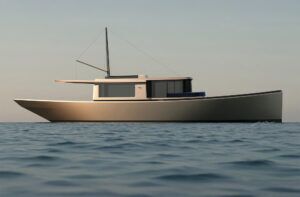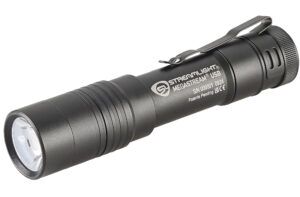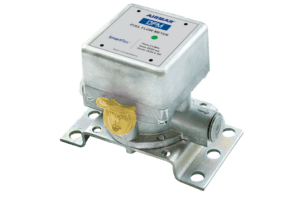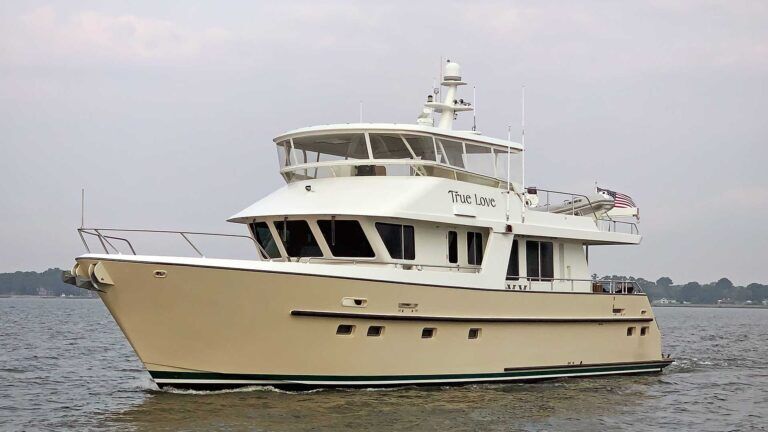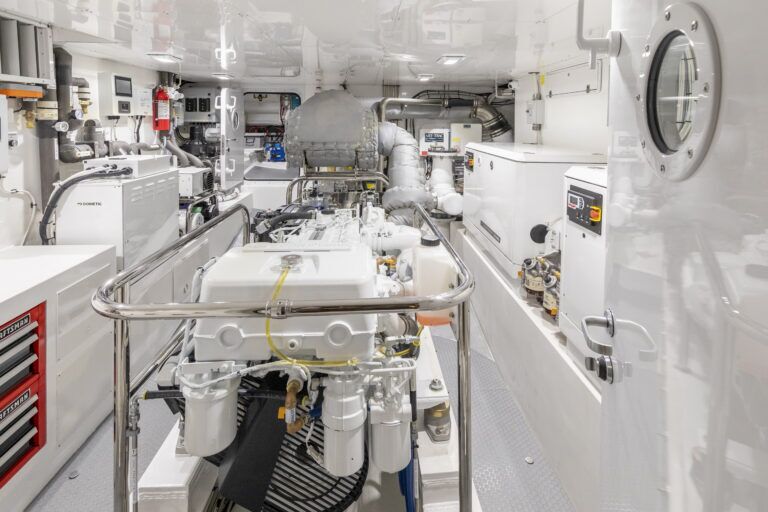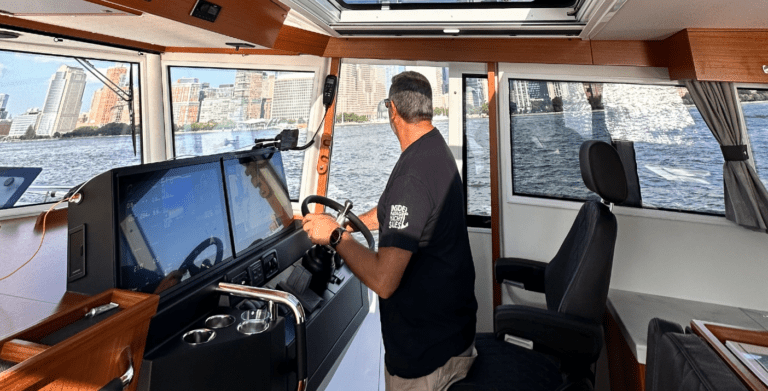The hook has been dropped and set. Your crew is itching for a night on the town. Since no one is ready to swim ashore, the tender will have to be launched, but it is such a pain in the neck, the crew starts foraging in the galley and considers reading a book in the cockpit instead.
If your dinghy storage and launching system is keeping you from enjoying visits to the shore, or even from anchoring out at all, it’s a problem. It’s an even bigger problem if you can’t launch your tender in a hurry with a short crew in an emergency.
Let’s explore options for the little boat on the big boat.
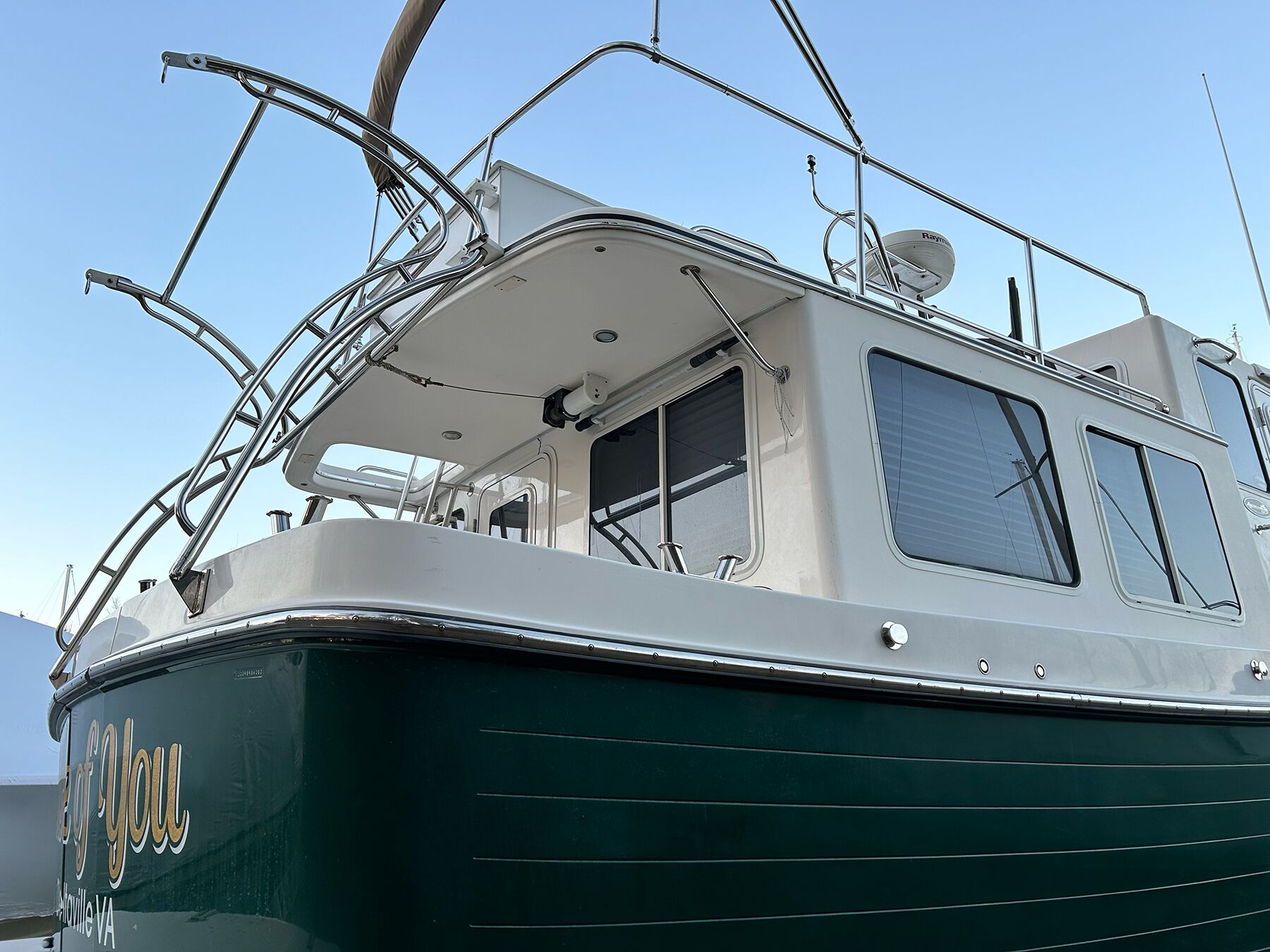
Row, Row, Row Your Boat
Cruising boats of yore typically had a wooden dinghy stowed in chocks on the foredeck. A pair of oars or a sail were the propulsion. If the mothership had a mast, then a tackle on a halyard or gaff could be used to hoist and launch the dinghy. Larger boats may have used separate iron or bronze davits that could pivot from the deck to the water. When fiberglass gained popularity, enterprising builders designed new tenders or took splash molds of wooden dinghies to produce inexpensive, durable versions.
While it can be pleasurable to row a lightweight dinghy alone, it can be less fun to transport an entire family against wind and current. The hull characteristics that make hard dinghies easy to row also tend to make them tippy, especially when you are entering or exiting. Most are only rated for small outboards.
Enter the inflatable dinghy. Early versions descended from military rescue craft. They were low pressure with fabric soles, and while they would keep you afloat, they certainly didn’t perform well underway. They did, however, deflate and roll into a compact package for easy stowing, and they were stable.
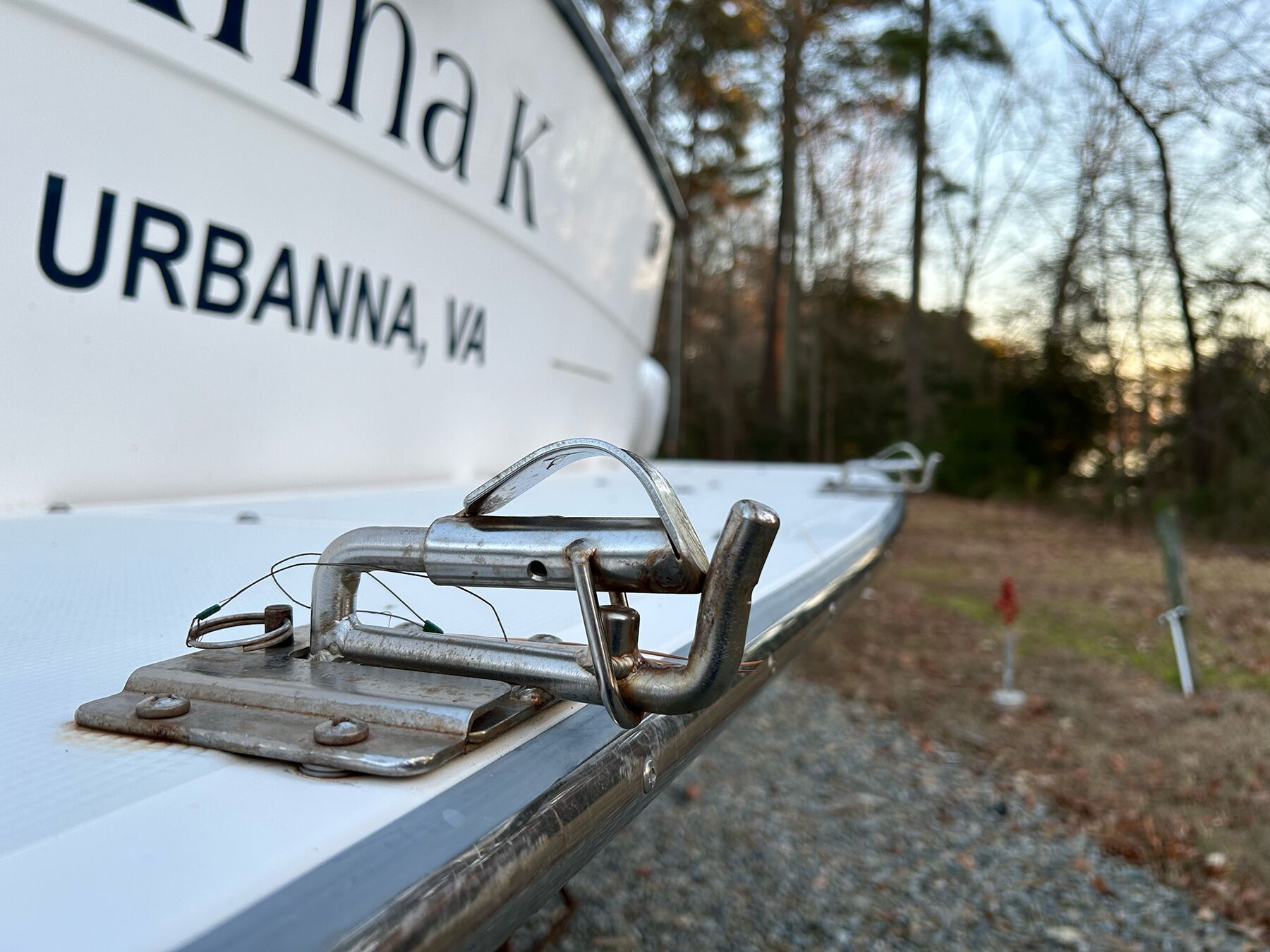
As time went by, flat fabric soles led to wood slat soles and then to shaped rigid hulls of fiberglass or aluminum. The addition of fixed transoms allowed the use of increasingly powerful outboards. Tenders could have the performance of planing craft, with the stability and cushioning of an inflatable. And as long as the tubes have air, they will not sink.
Today, we have better, more durable fabrics and glues that can hold higher air pressures for substantially better performance and durability. While it is still recommended to have oars aboard, most dinghies are powered by an outboard, either electric or gas.
We also have a different amount of weight to consider for stowing. While an 8-foot, non-inflatable fiberglass dinghy without a motor might weigh 75 pounds, an 8-foot inflatable with a fiberglass sole might be 120 pounds. Add in a 100-pound, 9.9-hp outboard and gas, and it is easy to triple the weight of the hard dinghy. Stepping up to an 11-foot center console with a 30-hp motor means 600 pounds that need to be lifted onto the mothership in a rolling anchorage.
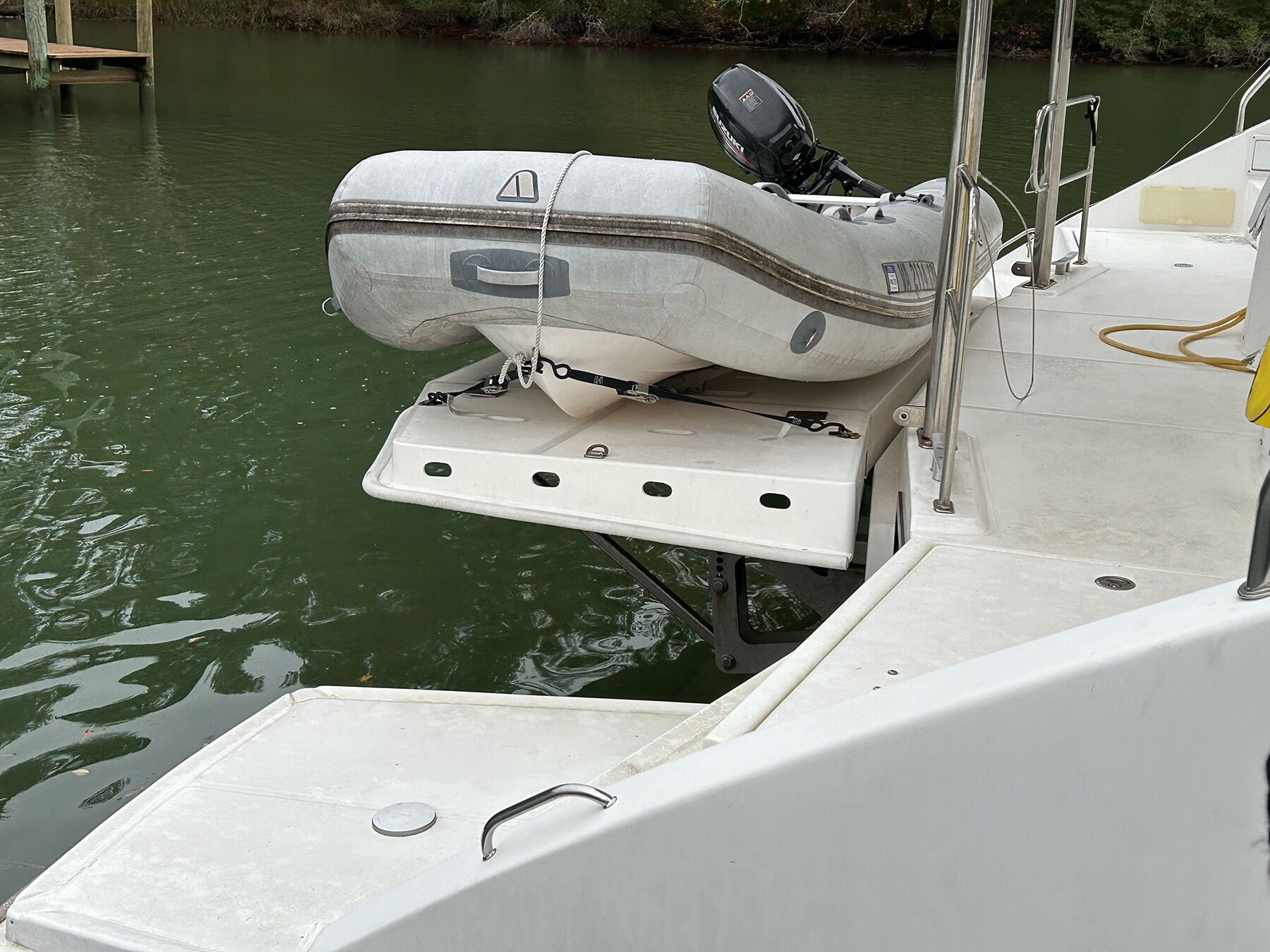
Where to Store
For some inexplicable reason, there are still cruising boats being manufactured without consideration for where the dinghy will be stored. This is supposedly because builders don’t know what type of dinghy the customer wants, but these days, it isn’t difficult to guess what most people generally will use. Builders should offer a setup with a little adjustability to cover the most common boats.
Dinghy storage options vary with the size of the boat. Cruising catamarans generally have well-thought-out davit storage centered between the hulls aft. Davits can work well for monohulls too. The dinghy stays ready to deploy by installing the plug and releasing any stabilizing lines and two tackle. Davits need to be rated for the weight, and the structure inside the boat often needs additional reinforcement so that switching to a heavier boat doesn’t damage the davits or transom. (As someone who once forgot to remove a plug in the dinghy prior to a tropical storm, I can attest that a dinghy can hold a lot of water, and it’s a good thing when a lifting shackle breaks to dump the water instead of something that costs a great deal more to replace.)
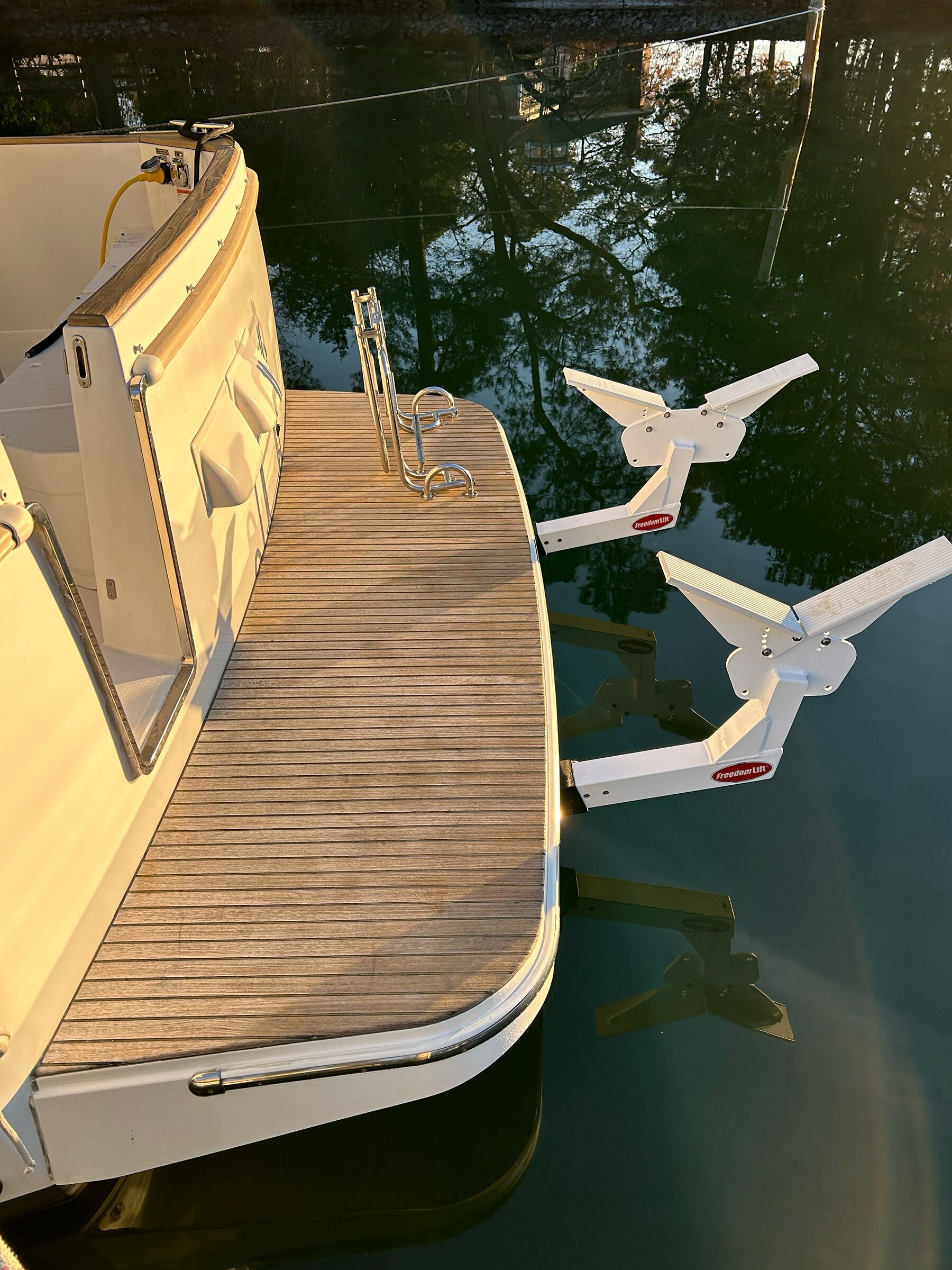
Speaking of water in dinghies: Davits on the stern need to be able to carry the dinghy high enough to prevent waves from astern breaking into the boat. Dinghy covers are always a good idea as long as they shed water and aren’t too difficult to install. For heavier boats and engines, it may be necessary to route the lifting tackle to winches.
Along the lines of keeping the dinghy close to the transom, Weaver Marine Products has a flip-up swim platform system. It relies on a pair of hooks mounted on the swim platform, and a set of eyes glued to the inflatable tubes. The dinghy is brought to the swim platform and clicked into the hooks. Once the occupants are aboard the mothership, the dinghy is hinged up diagonally to the storage position on the transom with block and tackle. The outboard can be removed and stored on a pad on the rail, potentially with a fixed crane or davit assisting. Alternatively, the motor can be mounted on a rotating bracket. This allows the boat to turn on the dinghy transom, but keeps the motor upright and secure. Otherwise, the motor would tip on its side, potentially filling the combustion chamber with oil or fuel.
This is a convenient system, but you must consider the strength of the swim platform, since it may not be designed for additional dinghy weight. In the best of times, metal swim platform brackets live a tough life, with vibrations and crashing waves working the fasteners, and with galvanic corrosion eating at the metal. If you have a flip-up swim platform system like this or are considering one, it is a good idea to pull and inspect the transom fasteners. Bronze bolts don’t suffer from crevice corrosion like stainless steel does, but they can dezincify over time. Once the bedding that seals the bolts fails, stagnant water can de-passivate stainless steel and allow it to erode freely. Confirm that any coring in the transom is dry. Oversize and backfill the holes with thickened epoxy to better protect the core.
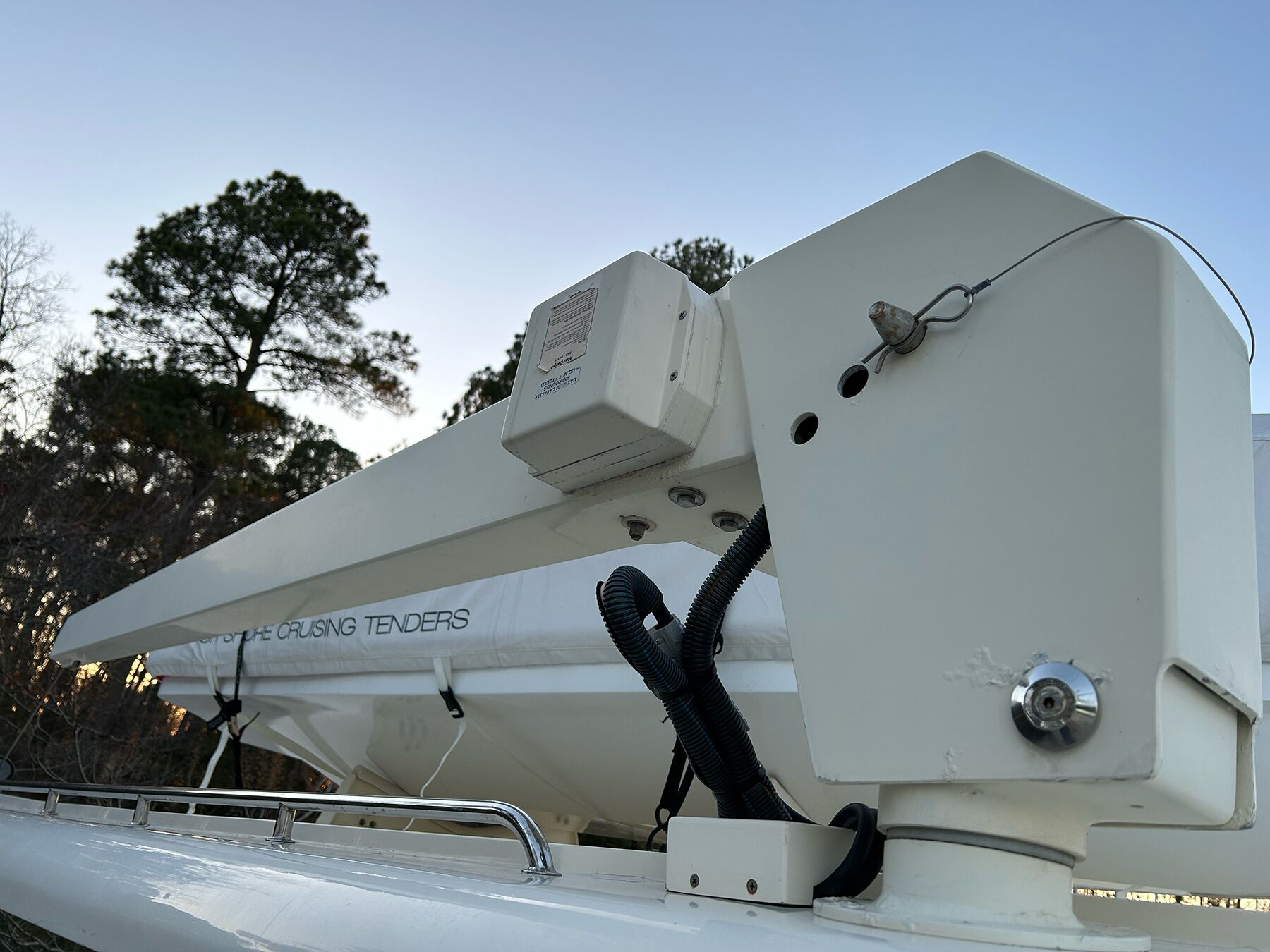
Adding a lifting bracket abaft the swim platform for dinghy storage may be an option. Check with your boatbuilder or naval architect to confirm that the transom will support the weight. A lifting bracket can greatly facilitate dinghy storage. FreedomLift, a major player, fabricates a variety of powered options. The bracket is lowered into the water, and the dinghy floats on and into chocks. Then, the arms are raised up out of the water, and the dinghy is secured. Fairly large dinghies can be stored this way, including PWC.
Up On Deck
A case can be made that storing the tender on the cabin top is a safer alternative to transom storage for bluewater work, since the dinghy is out of reach of breaking waves. Consideration must be taken for what extra weight that high up will do to the handling and rolling characteristics of the mothership, both laterally and longitudinally. If the dinghy is to be stored on the foredeck, will it cause the bow to bury sooner in a head sea? If too much weight is aft, will it cause problems with steering?
Classic boats may utilize a mast, boom and winch—either captive reel or winch-clutch—or even block and tackle if the boat is light enough. In most cases, more adjustability is better. An adjustable topping lift allows the angle of the boom to be changed while the sheet tackle does the major lifting out of the water. Stays, turnbuckles and chain plates will all need to be rated for the loads, and will require periodic replacement. Thought should be given as to how easily the mast can be lowered for bridge or boathouse clearance. Most can be set in pivoting tabernacles with some sort of gallows to receive and secure the mast once dropped.
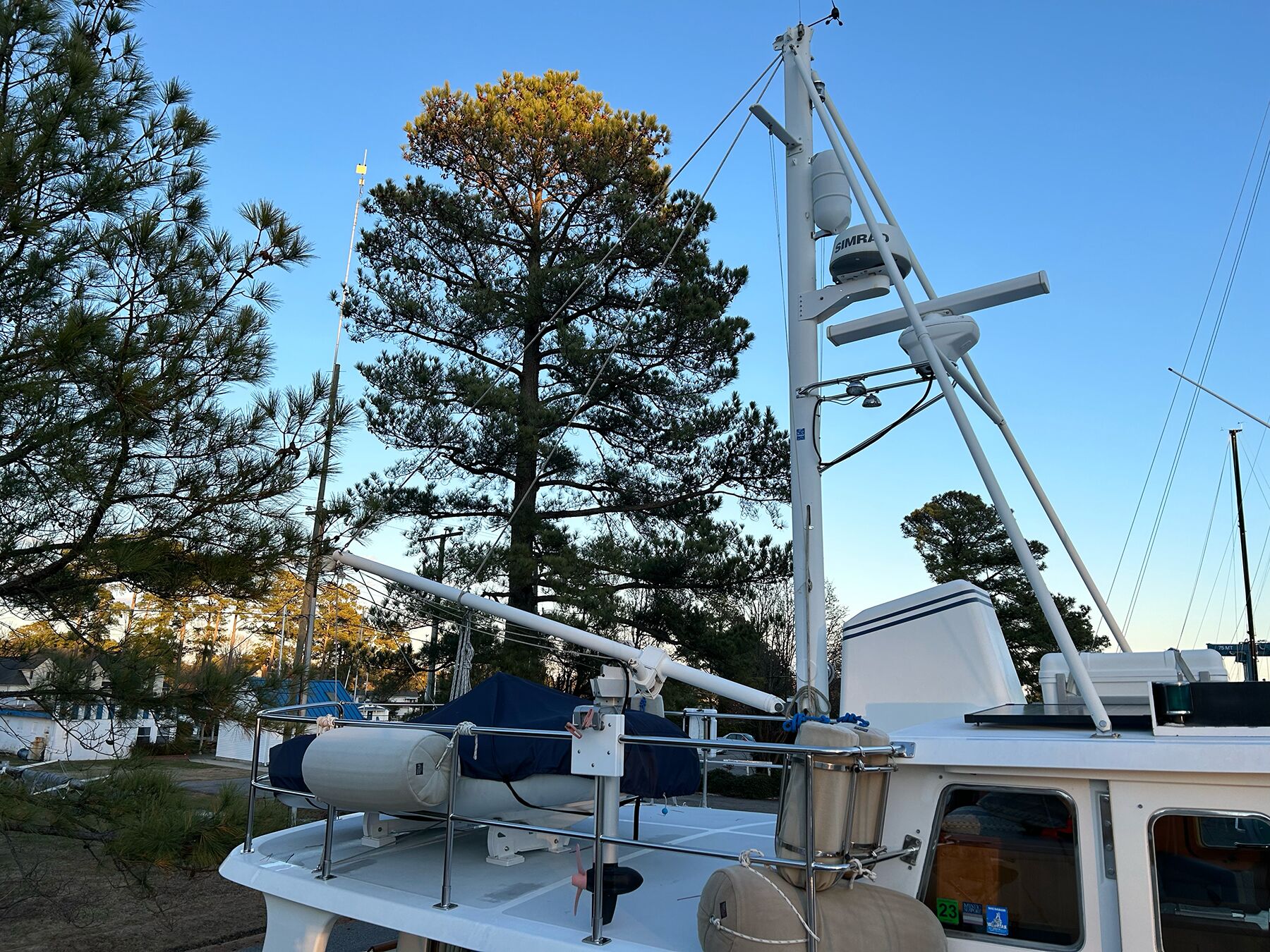
Single-post davits have become popular, and work well as long as the path the dinghy will take as it lifts and stores has been well thought out. This can be a complicated engineering process to plan and install aftermarket. A dinghy with an outboard lifted from a single-point harness can be an awkward object to move around, especially if it must maneuver around structures or rails. Lifting bridles need to be balanced to lift the boat evenly without tipping. Companies like Nautical Structures and Steelhead create high-quality davits in different configurations and weight-lifting capacities—from simple, manually rotating arms with powered winches to electric or electric-hydraulic units that can rotate under power as well as lift and extend their booms. It is wise not to scrimp on capacity or features, especially with heavier tenders. You’ll want all the control you can get if the anchorage is rough, and you’ll definitely want to practice with the crane on a calm day.
You will need a fixed place on deck to secure the dinghy. Chocks (wood, metal, custom or off-the-shelf and adjustable) will need proper installation so the dinghy and chocks can move when the mothership bashes through seas. Each time you tie down, it should be as if you’re heading into an epic battle, so make sure the lash points and chocks are through-bolted and rated for the weight. Again, remember to pull the dinghy plug.
One more consideration is to make sure that you can reach the tie-down points when the boat is on its chocks. Many yachts were not designed for larger dinghies. With tenders getting bigger, it can be difficult to reach both sides of the boat once it is stored, to connect the tie-downs or covers. Will you fit between the boat and rail? Can you reach the tie-down points from the side deck?
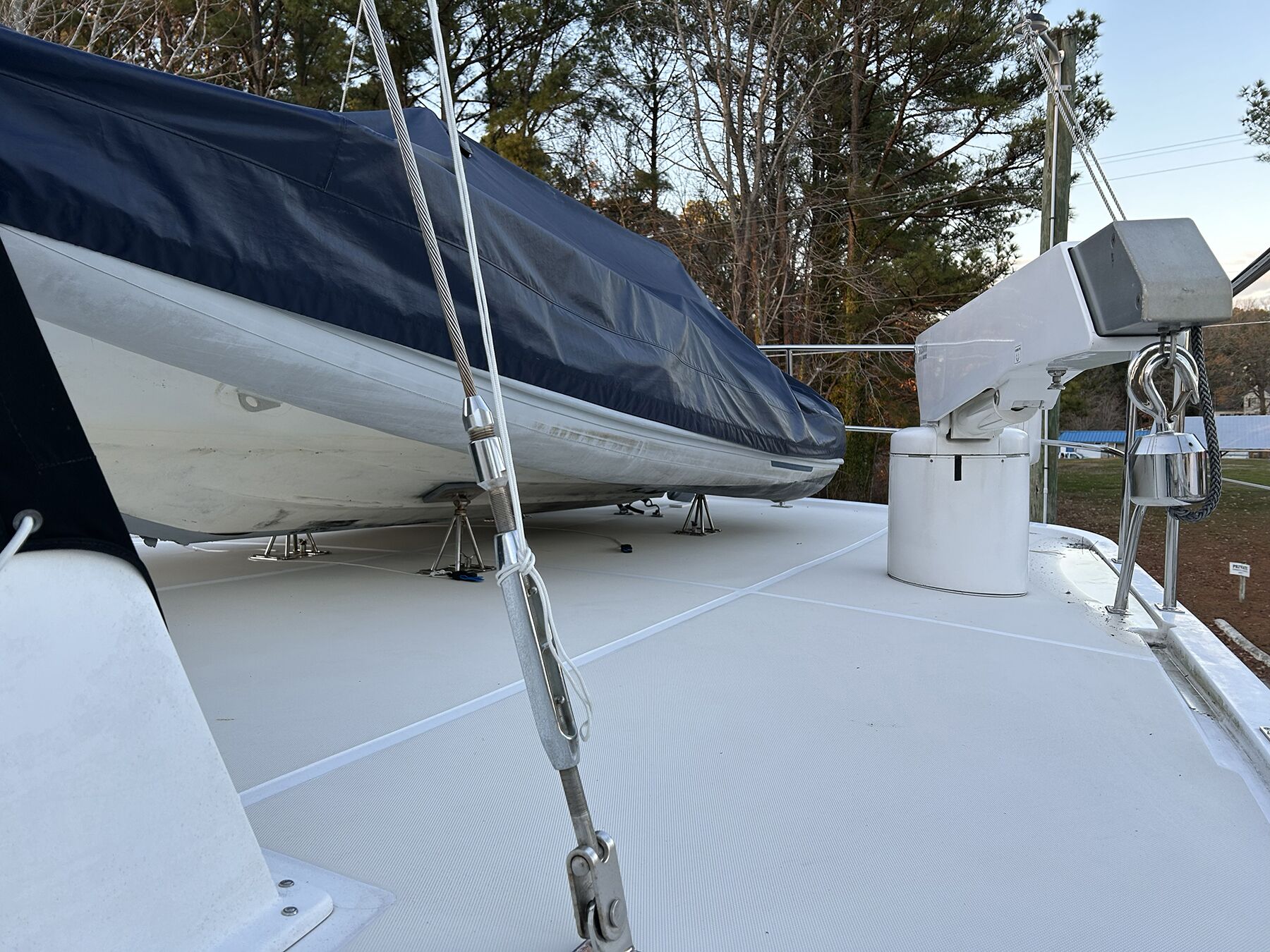
A Nice Harbor Cruise
One of the true pleasures in boating life is to hop in the dinghy and explore an anchorage, including visiting with other anchored boaters. The interface of the water and land is where so many beautiful things reside, and the dink can take you much farther upstream than the big boat. It’s also nice to feel safe with a reliable method of getting ashore. With a little planning, you can find the system that will make launching your tender a breeze.
This article was originally published in the April 2024 issue.



